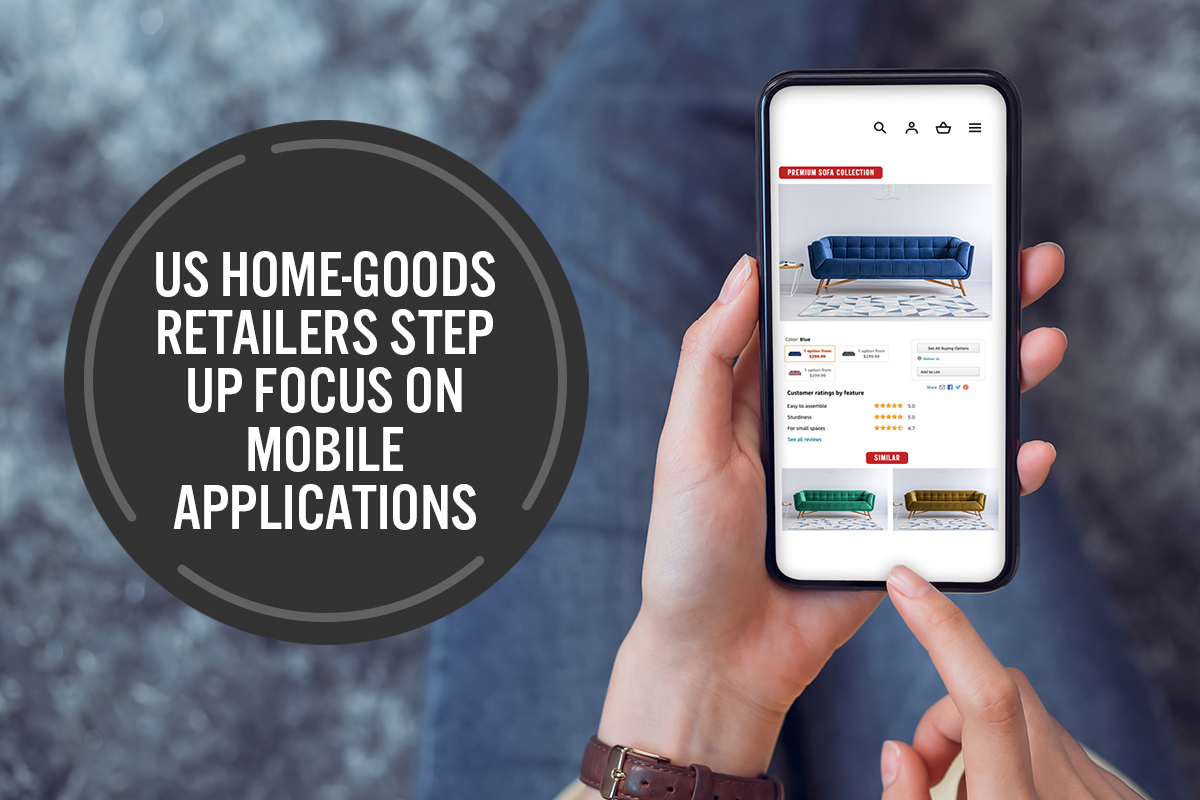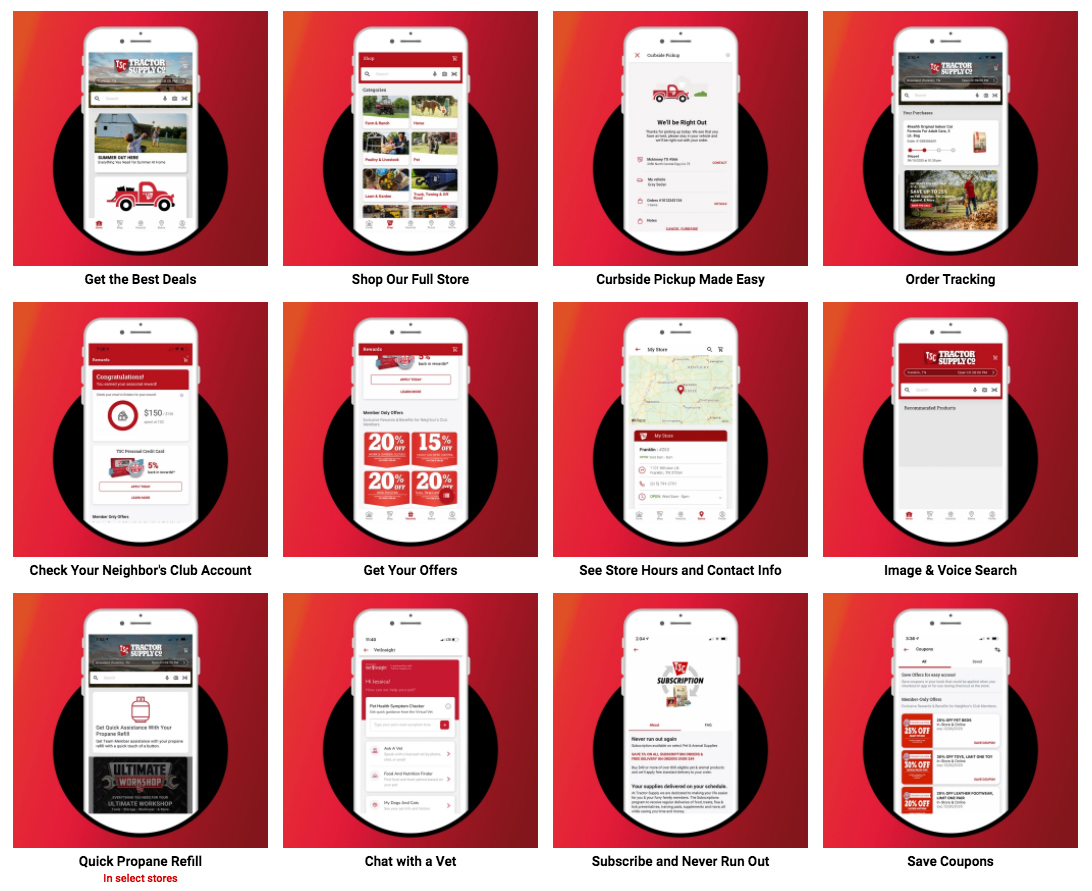
DIpil Das
What’s the Story?
Home-goods retailers are stepping up their focus on mobile applications as part of a wider pivot to e-commerce. With Home Depot integrating its loyalty program with a mobile-first approach, IKEA launching a new all-in-one mobile app and Tractor Supply launching its first ever mobile app, we are seeing a growing digital shift in tune with changing consumer behavior and evolving retail trends.Why It Matters
We think this trend among US retailers is one to watch for the following reasons:- Around 54% of all retail e-commerce sales in the US will be generated via mobile commerce in 2021, according to Statista. In home-goods retail overall—and particularly in home improvement—consumers are increasingly using mobile applications to plan and complete their purchases. As such, retailers will increasingly find that great mobile app experiences are crucial for success.
- Consumers are increasingly looking to mobile apps to research and purchase home-improvement products, despite the traditional preference for in-store shopping in the category.
- Data from mobile app store marketing intelligence provider Sensor Tower shows that first-time installs of the top three home-improvement apps in the US (from Home Depot, Lowe’s and Menards) between March and September 2020 rose 103% year over year, compared to a 13% year-over-year increase during the same period in 2019. Monthly active users across these apps increased by 35% for the aforementioned period in 2020.
- Retailers are increasingly integrating loyalty programs into mobile apps as such programs are widely considered an effective customer engagement tool. According to the Consumer Incentives 2019 report by payments management services provider Wirecard, 70% of consumers (across retail sectors) manage their rewards or incentive programs with a mobile app.
US Home-Goods Retailers Step Up Focus on Mobile Applications: In Detail
The increasing digital shift is a key trend in the home-goods retail sector, with mobile commerce constituting a significant component of this shift. We discuss the most recent initiatives taken by Home Depot, IKEA and Tractor Supply to improve their mobile app offerings. Home Depot Home Depot launched its three-year, accelerated investment program referred to by the retailer as “One Home Depot” in December 2017, marking the start of its focus on becoming a digital-centric retailer. Although progress to this end was steady across the first two years, the retailer did not see a sales lift in line with its expectations as it faced issues with legacy technology. However, these investments proved to be a significant advantage for the retailer following the outbreak of Covid-19 pandemic. As part of its digital focus, the retailer has looked to optimize its mobile app experience. A 2019 Forrester Research report ranked Home Depot as the top mobile app by a retailer on the basis of its functionality and strong user experience. Consumers can browse Home Depot’s product range from home through the mobile application, or use it to find additional product information on in-store items by scanning the product barcode. The app also features a toolbox with a unit measurement converter, as well as a DIY measuring hack tailored to users’ shoe sizes. In October 2020, the retailer updated its loyalty program for home-improvement professionals, providing members of the Pro Xtra program a seamless interface to view loyalty rewards and redeem perks through its app. The retailer’s mobile-first approach to its loyalty program is another indicator of its enhanced adoption of the latest technologies to engage customers. The app also offers a convenient alternative to carrying membership cards and key fobs that could wear out or get damaged easily. The company’s app also hosts loyalty features for non-professional shoppers, including displaying members’ accumulated points and offering occasional bonus rewards in order to encourage repeat store visits and purchases as members track their advancement to the next reward level. In 2018, Home Depot introduced a mobile app called the PocketGuide, which the company described as leveraging gamification strategies to aid in training its new hires. The app includes gamified learning activities to support employee induction and reduce the need for conventional backroom training. [caption id="attachment_124774" align="aligncenter" width="725"] Home Depot’s Mobile App
Home Depot’s Mobile App Source: Company website [/caption] IKEA Following the coronavirus outbreak, IKEA accelerated its digital focus and registered 60% growth in global online sales, as well as 32% growth in its US e-commerce business for the broken financial year 2019–2020, ended August 31. IKEA’s global e-commerce sales accounted for 16% of its overall sales in its fiscal 2020, ended August 31, 2020—up from 10% in its fiscal 2019. IKEA announced the creation of a Digital Hub in the US in 2020, along with the appointment of Umesh Sripad as its new Country Digital Manager to lead its digital transformation. The Digital Hub’s key focus areas include bringing the in-store shopping experience to life on its e-commerce site and mobile apps. The retailer launched its all-in-one shoppable app in the US in December 2020, after launching it in various international markets in the summer of 2019. The new app has been designed by web design studio Work & Co and was initially launched internally to US employees but is now available to all US customers. According to the company, the app is designed to bridge the gap between in-store and online shopping for customers. It offers thousands of shoppable, Pinterest-like images to provide inspiration for specific rooms and allows users to create and manage a profile, as well as link their IKEA Family rewards card. The launch of the new app is in line with the company’s plan for a new, more unified digital strategy and the increased traction for online shopping among its customers pushed the company to expedite the release of its app in the US. The launch coincides with the retailer’s decision to discontinue its iconic printed catalog. In a statement made to media firm Modern Retail in January this year, IKEA’s Chief Digital Officer Umesh Sripad stated that the new all-in-one app differs from IKEA’s previous mobile solutions. The retailer previously had several distinct apps to host its catalog and its AR/VR room designs solutions, whereas the new iteration connects catalog and design solutions as well as enabling to make purchases directly in the app. Sripad described the new app as “a true virtual companion to the IKEA store experience.” IKEA first launched the all-in-one shoppable app in the summer of 2019 in France, the Netherlands as well as in its home market of Sweden, and subsequently saw over 4.9 million user downloads as of January 2020, according to the company. The company introduced features specific to US consumer demand, such as curbside pickup services, for its launch in the US market. The new app offers improved user privacy, in keeping with IKEA’s Customer Data Promise, enabling customers to shop either via a personalized browser or reset their whole search history. The retailer also plans to introduce product ratings and reviews, as well as improved search capabilities and returns and refund processing. [caption id="attachment_124775" align="aligncenter" width="725"]
 IKEA’S all-in-one mobile app was released in the US in December 2020
IKEA’S all-in-one mobile app was released in the US in December 2020 Source: IKEA’s Instagram account [/caption] Tractor Supply Tractor Supply launched its first ever mobile application in early July 2020. The app is designed to offer a personalized shopping experience for usersand also features the retailer’s Neighbor's Club loyalty program. The launch follows acknowledgement from Tractor Supply that the majority of its site traffic comes via mobile devices, as discussed on its third-quarter earnings call on October 22, 2020. According to the company, the newly introduced app has enabled it to further personalize customer experiences and offer features that make the shopping experience simple and convenient. Tractor Supply can leverage information that customers share on the app, such as via its Neighbor's club program, customer profiles and purchase histories. In its fourth-quarter earnings call on January 28, 2021, Tractor Supply stated that the new mobile app has surpassed more than one million downloads. Management explained that the company is now rapidly looking to build on the apps’ transaction capabilities to improve convenience, as well as optimize content to help customers research the products offered by Tractor Supply. [caption id="attachment_124776" align="aligncenter" width="725"]
 Key features offered on Tractor Supply’s mobile app
Key features offered on Tractor Supply’s mobile app Source: Company website [/caption]
What We Think
Implications for Brands/Retailers- Offering the option of a convenient and user-friendly mobile application is becoming increasingly important for retailers to ensure efficient e-commerce and omnichannel operations. Well-developed mobile apps can be a key differentiating factor for retailers.
- Mobile apps can be used by retailers to complement customers’ in-store shopping experience, for instance, by including product information, product pairing suggestions, customer reviews and “how-to” videos. These functions aim to make in-store research easier and thus increase the likelihood of purchase.
- By integrating loyalty programs into mobile apps, home-improvement retailers have an engagement channel where they can offer enticing targeted offers and rewards to active buyers for their ongoing home-improvement projects. Retailers can even target relatively dormant customers in this may, which may inspire unplanned purchases.
- Even though big-ticket home goods purchases tend to be infrequent, customers that experience a smooth and convenient shopping experience through a retailer’s mobile app will likely return to the same retailer for their next project, emphasizing the need for retailers to offer an engaging and user-friendly app experience.
- With retailers looking to differentiate themselves from competition by offering superior customer experience on their mobile applications, there is significant opportunity for technology vendors to partner with retailers to include innovative features that can impress and engage consumers.
- Technology vendors also have an opportunity to partner with retailers in developing effective loyalty programs including through the use of gamification, within retailers’ mobile applications.